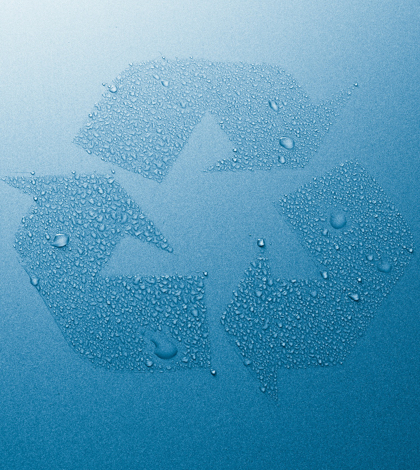Los Angeles Mayor Eric Garcetti announced a major step to expand water recycling and reduce reliance on imported water on Thursday. Improvements to the city’s Hyperion Treatment Plant will allow Los Angeles to reach peak recycling capacity and recycle 100 percent of its wastewater by 2035.
“Conservation is about more than how we respond to a dry year — it should shape how we prepare our City for tomorrow,” said Mayor Garcetti. “Maximizing L.A.’s recycling capacity will increase the amount of water we source locally, and help to ensure that Angelenos can count on access to clean water for generations to come,” he said to the crowd assembled which included Councilmember Mike Bonin and senior leadership from the Los Angeles Department of Water and Power (LADWP) and the Bureau of Sanitation (BOS).
Hyperion is one of Los Angeles’ four water treatment facilities which also includes: L.A. Glendale, Tillman, and Terminal Island facilities. Hyperion is the largest treatment plant west of the Mississippi River. It currently receives 81 percent of the city’s total wastewater and recycles 27 percent of the water that flows into the facility.
Just two percent of the Los Angeles’ water supply currently comes from its four water treatment facilities. Increasing Hyperion’s recycling capabilities to 100 percent by the 2035 target date will increase that number to 35 percent and will aid in meeting the mayor’s Sustainable City pLAn goals to cut purchases of imported water by 50 percent by 2025 and source 50 percent of water locally by 2035. The planned improvements to Hyperion will cost roughly $2 billion over the next 16 years and will create middle class engineering, construction, operations, and maintenance jobs.
“With the City committing to 100 percent recycled water at all four treatment facilities by 2035, LADWP will be able to reliably source up to 70 percent of its water sustainably and locally instead of depending on costly imported water,” said LADWP General Manager David H. Wright. “Today’s announcement is nothing short of a game changer when it comes to securing LA’s water future.”
“Hyperion played a pivotal role in restoring the Santa Monica Bay,” said Bureau of Sanitation Director Enrique Zaldivar. “I am thrilled to see it now play a crucial role in the future of the City’s water resilience.”
The efforts at Hyperion and Los Angeles’ three other wastewater treatment plants are part of a growing portfolio of projects spearheaded by the mayor to reduce Los Angeles’ dependence on imported water. The three other wastewater facilities owned by the city are already at 100 percent recycling capacity.
Last year, Mayor Garcetti broke ground at the North Hollywood West Groundwater Treatment facility, the first of four groundwater treatment projects that will eventually clean the San Fernando Valley Groundwater Basin — an aquifer that can provide drinking water to more than 800,000 Angelenos. The mayor also helped lead the passage of Measure W, a $300 million local measure approved by Los Angeles County voters in 2018 to fund infrastructure projects and programs to capture, treat and recycle rainwater.
“The Mayor’s bold and visionary announcement marks the dawn of the City’s transformation to a sustainable water management future where every drop of local water is treated as essential,” said Mark Gold, UCLA Associate Vice Chancellor for Environment and Sustainability. “The transformation of the City’s four treatment plants to full water recycling can supply Los Angeles with approximately a third of our annual water supply: the most critical step in making this megacity a sustainable L.A.”
California Natural Resources Secretary Wade Crowfoot also praised the Los Angeles mayor for his leadership in recycling water initiatives saying, “Mayor Garcetti’s strong leadership expanding water recycling in Los Angeles is timely and important, both for the city and the entire state. This commitment, paired with statewide investment in conservation, groundwater storage, stormwater capture and other strategies, moves us toward the all-of-the-above approach we need for California’s future.”
 California Water News Daily Your Source For Water News in California
California Water News Daily Your Source For Water News in California


